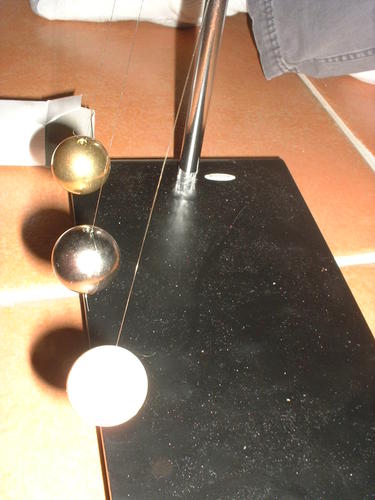Month: February 2009
Open Source Physics Educational Java Tools
Well, it’s good news bad news time. I was excited to find these via an article in the Physics Teacher. Clearly, I haven’t been paying attention, because they’ve been mentioned before, but the item which caught my attention was an article that used a program called Tracker to analyze 2D motion. I immediately thought of …
C/2007 N3 Lulin from Brooklyn
Well, sort of. I got out briefly tonight with my wife’s Canon 12×36 IS binoculars (that’s Image Stabilized). The position of Lulin is easy enough to find with Saturn less that 6º away and two reasonably bright star nearby to help zero in on its location – Leo 59 at mag 5 and Leo X-63A …
100 Hours of Astronomy
The canonical website for information is http://www.100hoursofastronomy.org/. This page will be updated with new local to New York and Brooklyn. Keep in mind that there is a weather component to this event, but I hope to be able to sponsor both night viewing and some solar viewing, although the Sun has been very quiescent (no …
Another Reason to Turn off the Lights
Yet another study has found a connection between cancer and night-time lighting. Last time it was breast cancer, this time is it prostate cancer. In Darkness, Melatonin may Suppress Breast and Prostate Cancers, Science News reports on another study that shows a link between burning the midnight oil and human health. The great irony to …
Pendulums
For his science fair project, Jonathan investigated pendulums. His hypothesis was that how fast the pendulum swings, its period, should depend on how heavy it was. So I arranged to have 1-inch diameter pendulum bobs made of copper, steel, and wood. We suspended each from a horizontal beam, carefully measured so they were all the …
How Fast is Sound?
A few months ago, I read an article in The Physics Teacher (published by the American Association of Physics Teachers) on measuring the speed of sound using a couple of microphones hooked up to a computer’s line-in jack. Apart from having to make a trip to Radio Shack to buy some parts to convert two standard unpowered microphones into a pair of powered microphones for stereo input, the process was amazingly straightforward. I did a quick proof-of-concept in the dining room one evening and go
Search
.Archives
- May 2025 (3)
- October 2024 (1)
- May 2024 (2)
- April 2024 (3)
- September 2022 (5)
- April 2022 (1)
- January 2022 (3)
- December 2021 (4)
- September 2021 (3)
- July 2021 (1)
- January 2021 (1)
- November 2020 (2)
- October 2020 (2)
- September 2020 (2)
- August 2020 (5)
- July 2020 (1)
- November 2019 (2)
- September 2019 (1)
- August 2019 (2)
- September 2017 (1)
- August 2017 (1)
- September 2015 (3)
- August 2015 (2)
- June 2015 (5)
- May 2015 (3)
- May 2013 (2)
- January 2013 (1)
- December 2012 (2)
- September 2012 (1)
- June 2012 (1)
- May 2012 (1)
- October 2011 (2)
- September 2011 (2)
- April 2011 (2)
- March 2011 (10)
- January 2011 (8)
- November 2010 (2)
- October 2010 (1)
- September 2010 (3)
- August 2010 (2)
- July 2010 (1)
- June 2010 (1)
- April 2010 (3)
- February 2010 (3)
- January 2010 (3)
- December 2009 (6)
- November 2009 (3)
- October 2009 (7)
- September 2009 (8)
- August 2009 (4)
- July 2009 (1)
- June 2009 (2)
- May 2009 (2)
- April 2009 (7)
- March 2009 (1)
- February 2009 (6)
- January 2009 (4)
- December 2008 (4)
- November 2008 (3)
- October 2008 (11)
- September 2008 (4)
- August 2008 (5)
- July 2008 (5)
- June 2008 (2)
- April 2008 (4)
- March 2008 (18)
- February 2008 (9)
- November 2007 (1)
- October 2007 (3)
- July 2007 (3)
- April 2007 (1)
- March 2007 (6)
- February 2007 (3)
- December 2006 (3)
- October 2006 (4)
- September 2006 (1)
- July 2006 (5)
- May 2006 (10)
- April 2006 (9)


